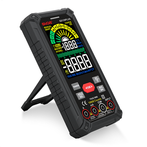Main parameters and composition circuit of power filter
Main parameters of power filter
① Working voltage: the stable voltage at which the filter can work safely. The working voltage of the single-phase filter is generally 250V, while the working voltage of the three-phase filter is 420V;
② Insertion loss: Since the power filter is connected in series between the power grid and the power line of the equipment, and the power filter is a passive network, it is bound to cause a voltage drop, which leads to insertion loss caused by the power filter. Therefore, the insertion loss A of the filter is usually measured with a 50Ω resistor when the equipment is not working, and then an attenuation curve is drawn. For different interference sources and specific equipment, the actual loss curve may be quite different. Therefore, whether a filter can effectively suppress interference on a specific power grid can only be determined after actual measurement. , so as to choose the filter that suits you;
③ Working current: There is a certain relationship between the allowable working current and the working temperature. The general filter only gives the value at room temperature (20℃), and sometimes also gives the value at a higher temperature (40℃ or 45℃). The parameters can refer to the actual object;
④ Leakage current: Since there is an X2 capacitor between the phase line and the neutral line, when the power is turned on, the current will flow into the ground through the capacitor, which leads to the existence of leakage current. For safety reasons and other purposes, the leakage current must be reduced to a safe value. For details, please refer to the maximum leakage current allowed by the national standard;
⑤ Working temperature: All equipment will have a corresponding ambient working temperature. Only when it is used within the specified range can it exert its good performance.
Power filter principle circuit
L1 is a common mode inductor, and its upper and lower parts are a pair of common mode inductor coils. The two coils are wound on the same iron core with the same number of turns and phase (winding in reverse). In this way, when the normal current in the circuit flows through the common-mode inductor, the current generates a reverse magnetic field in the inductor coil wound in the same phase and cancels each other out. At this time, the normal signal current is mainly affected by the coil resistance (and a small amount of damping caused by leakage inductance); when there is current flowing through the coil, due to the isotropic nature of the common-mode current, a magnetic field in the same direction will be generated in the coil, increasing the inductive reactance of the coil, making the coil appear as high impedance, producing a strong damping effect, thereby attenuating the common-mode current and achieving the purpose of filtering.
Y capacitors are capacitors that are connected between the two power lines and the ground (L-E, N-E), and usually appear in pairs, such as Y1 and Y2 in the figure. Based on the limitation of leakage current, the value of Y capacitors cannot be too large, usually nF level, and Y capacitors suppress common-mode interference.






